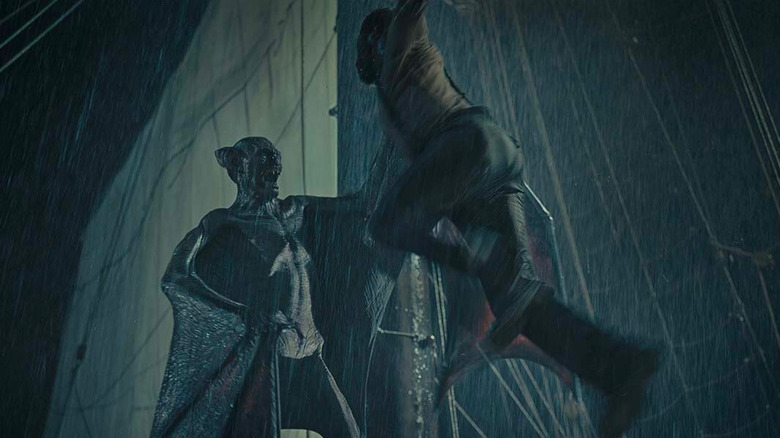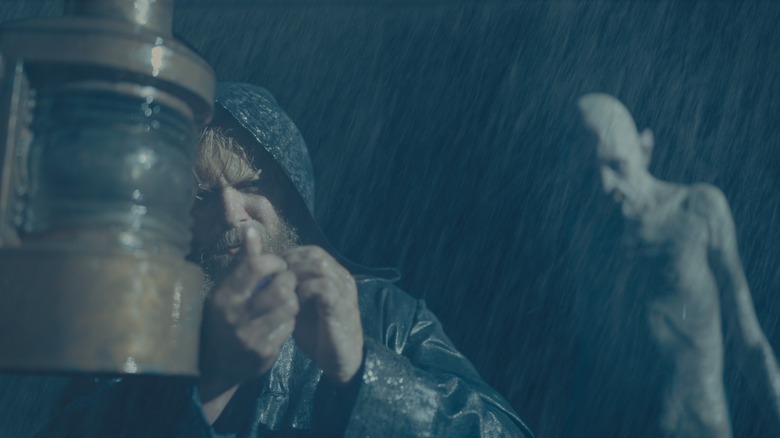The Last Voyage Of The Demeter Demanded Lots And Lots Of Blood
Fish gotta swim, birds gotta eat, and Dracula simply has to feed on buckets and buckets of blood. Some laws of nature just can't be ignored, even if it's coming from a creature that has no place in the natural order of things to begin with. Of course, his victims tend to find out the hard way that their (blood) loss is only his gain.
Directed by Norwegian filmmaker André Øvredal, "The Last Voyage of the Demeter" charts a very different course than the typical Dracula movie. Focusing on a single chapter from Bram Stoker's original novel, the horror film fleshes out the details of one very specific sea voyage to England. Naturally, it ends in tragedy for pretty much every single person fated to board that doomed vessel, which unknowingly carried Dracula himself in the cargo hold. Escaping every night to feed on the crew to his heart's content, the centuries-old vampire leaves behind a trail of blood whenever he encounters the next poor soul ... and, as it turns out, that was a marching order during production of "Demeter."
In an interview with IGN, Øvredal revealed one of his biggest priorities in order to make the R-rated period piece pack as much of a punch as it does. At the end of the day, horror movies are typically most dependent on savvy direction, lighting, creature design, visual effects work, and the commitment of all the actors involved. But there's just no denying the old-school pleasures, scares, and thrills of pouring as much blood into kills as humanly possible. For those who watched the film, it's clear that nobody involved had any interest in holding back on the blood.
'Give us more blood'
Is it possible that the process of making a Dracula movie turns the actual filmmakers a little bloodthirsty themselves? That seems to be the case with director André Øvredal while filming "The Last Voyage of the Demeter." Popular ship-faring films like "Master & Commander" or even "Pirates of the Caribbean" prove that such settings can feature several imaginative ways for unsuspecting sailors to wind up in a heap of trouble, but none quite compare with the classic premise of Dracula on a boat. In order to fully depict that on the big screen, of course, the creative team had to make use of quite a bit of fake blood.
With a laugh, Øvredal told IGN about his recollections of needing more and more of the red stuff to help dress up every horrifying kill on the deck of the Demeter. When in doubt, apparently, just add more blood. As he put it himself:
"I think we couldn't get enough of it. We were like, 'Okay, we've got to get more blood. Give us more blood.' I don't know how many times that was said."
Fair enough! While the film is, unfortunately, sinking at the box office due to a slightly oversized budget, it's tough to imagine that anyone expressed reservations over the resources spent on blood. In fact, producer Brad Fischer remained in lockstep with the director over this mission statement, saying, "['The Last Voyage of the Demeter'] is about blood, so it has to have a presence. The movie was always dependent on the gruesomeness of the journey." Without such gore coating the deck and bulkheads of the Demeter, the movie hardly would've lived up to its atmospheric scares. We're thankful the filmmakers agreed.
"The Last Voyage of the Demeter" is now playing in theaters.

